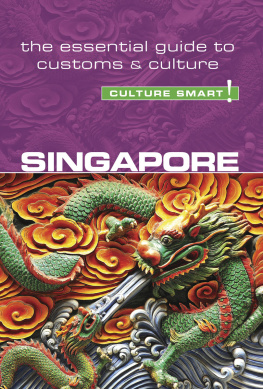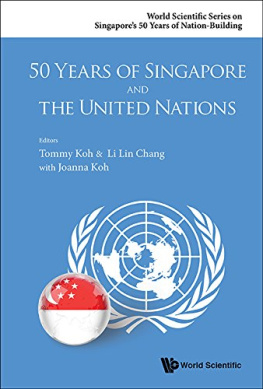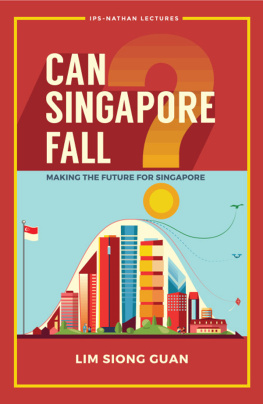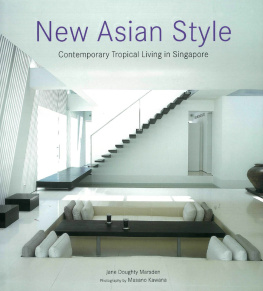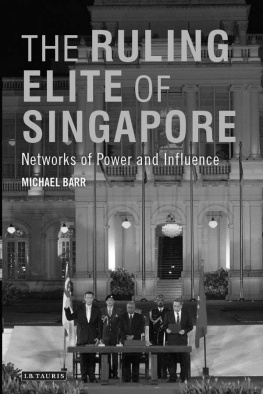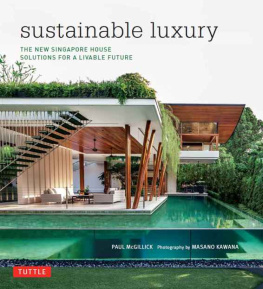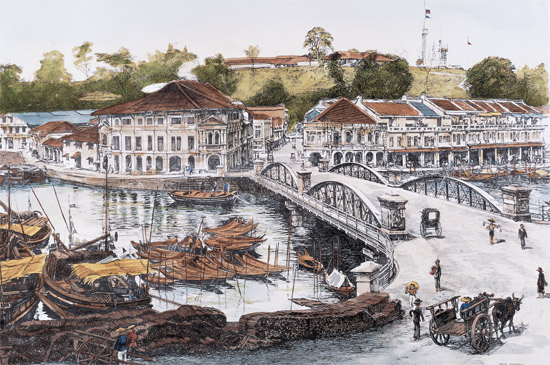Clarke Quay , a pen and ink drawing by English artist Peter Goodhall showing the area around 1893.
Welcome to the new asia
Singapore is hot! Not just because it is nearly on the equator, but because of all thats happening here. This proud nation strides confidently into the 21st century.
f OR A COUNTRY that gained full independence as recently as 1965, Singapore has come a long way. Legend has it that the island once known as Temasek was settled back in the mists of time by Sri Tri Buana, who established SingapuraLion City after he sighted a leonine beast in the area. His descendants ruled for five generations until the last ruler, Parameswara, was forced to flee when the Javanese attacked. The first documentary evidence for Singapore dates from the thirteenth century, when it was a flourishing centre for trade. A slow decline followed, with jungle reclaiming the island. By the nineteenth century, seafarers who roamed the region had created a few settlements on the island, and some enterprising Chinese migrants established plantations of gambier and pepper. But the arrival of one man would change everything.

Singapores National Day Parade, a source of great national pride, takes place each August on the Padang (Malay for plain or field) near City Hall, Parliament House, the Supreme Court and other important civic buildings.

Looking north west across the city, the land in the right foreground is reclaimed from the sea, like much of Singapores easterly fringes. The tall buildings form the financial district of Shenton Way and Robinson Road, while the East Coast Parkway snakes across the landscape.
t O COUNTER THE DUTCH TRADING monopolies in the East, Sir Thomas Stamford Raffles signed an agreement with the Sultan of Johor, allowing the British to establish a trading post on Singapore. Thus began Singapores modern era. Within three years of Raffles landing in 1819, the population numbered more than 10,000, of which 60 per cent were Malays. By 1860, at the first census, the population exceeded 80,000 and was mostly Chinese. Other migrants seeking success included Tamils, Ceylonese, Bengalis, Gujuratis, Punjabis, Javanese, Bugis, Balinese and Sumatrans, as well as Europeans. The foundations were laid for Singapores remarkable growth.

Many tall buildings in Singapore are government-built Housing & Development Board (HDB) apartment blocks.

The new Singapore Flyer, at 541 feet (165m), offers a breathtaking view of Marina Bay and the city.

The iconic Marina Bay Sands features three luxury hotel towers connected by a sky terrace on the roof, the Sands SkyPark.
a FTER RAFFLES, Singapore prospered for many years under the British. In 1929, however, tin and rubber prices collapsed and thousands lost their jobs in the Great Depression. Although considered impregnable by the Allies during the Second World War, Singapore was quickly overrun by the Japanese in 1942. After peace in 1945, Singaporeans began planning for independence. Under a new constitution David Marshall was elected first chief minister in 1955, and he lobbied Britain unsuccessfully for full independence. Meanwhile a young Straits-born Cambridge graduate led a group of lawyers, teachers and journalists in forming a left-wing political party whose rallying cry was Merdeka! (freedom). In the 1959 elections, Lee Kuan Yew and his Peoples Action Party swept to power. After failing in an attempt to become a Malaysian state in 1963, Singapore became fully independent in 1965. Lee became the first prime minister, and stayed in that position for 31 years, stepping aside in 1990 into the specially created position of senior minister to allow a younger generation to take the political reins. His vision, intellect and integrity have earned him a place in history.

Most of the worlds major players in banking and finance maintain a significant presence in Singapore and it is likely that their offices will be found here in the downtown financial district, overlooking the waterfront.

The Mass Rapid Transit (MRT) system serves most HDB estates and New Towns. It is soon to be augmented by a Light Rapid Transit (LRT) system.

Singapore Art Museum is housed in a beautifully restored school building, the former St Josephs Institution, which was the first Catholic school in Singapore.

A picturesque sunset view of Marina Centre showcasing recent additions to Singapores skyline. Behind the Singapore Flyer from left to right are the Ritz-Carlton Hotel, the Mandarin Oriental Hotel, the Millenium Towers and the Suntec City office towers.



Elgin Bridge and the Singapore River; Cruise Centre and one of the cable car towers, with a cable car heading for Sentosa Island; cruising on the river is popular now that the waterway has been largely turned over to leisure usage.
p OST-COLONIAL SINGAPORE is an astonishing success story. The Peoples Action Party, in power to this day, began alleviating poverty early. Infrastructure has always been a high priority. Low-cost, high-rise housing replaced over-crowded downtown areas, and most Singaporeans now own their homes. The container port is one of the worlds busiest and most efficient. The Mass Rapid Transit system is the envy of other nations. Business travellers consistently rate Changi Airport the best in the world. Manufacturing industries fuelled much of the annual growth of eight per cent or so over many years, aided by the famous Chinese work ethic. Tourism, too, has been encouraged and is a thriving industry.




